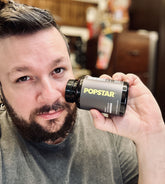Butterfly Rimming is a term sometimes used on men’s health and sexual wellness websites to describe a particular approach to oral-anal contact. This article explores the anatomy involved, addresses potential health considerations, and offers frequently asked questions (and answers) to provide a clear and comprehensive perspective on this intimate practice. Our goal is to create helpful, NLP-friendly content that balances medical insights and reader engagement.
Table of Contents
- What Is Butterfly Rimming?
- Why Is It Called “Butterfly” Rimming?
- Anatomy and Physiology of Oral-Anal Contact
- Health Benefits and Considerations
- Frequently Asked Questions
- Helpful Tips for a Comfortable Experience
- Closing Thoughts
- References
What Is Butterfly Rimming?
When people talk about “Butterfly Rimming,” they often refer to an oral-anal practice wherein partners engage in deliberate and often gentle stimulation around the anus. The term “butterfly” here can be interpreted in different ways: for some, it evokes a certain position that resembles spread-out wings, and for others, it can simply represent the delicate, fluttery sensations involved. While there is no one-size-fits-all definition, the underlying principle is the intimate and careful contact of the external anal area with the mouth and tongue. In some contexts, “Butterfly Rimming” also involves variations in positioning, creative use of hands, and a focus on pleasurable, hygienic exploration.
From a men’s health perspective, anal stimulation may be associated with numerous considerations: the proximity of the prostate gland (often described as a “male G-spot”), the potential for heightened arousal, and the possibility of establishing deeper emotional connections with a partner. Understanding these angles helps dispel myths or uncertainties around the subject and allows men and their partners to make informed choices.
It is crucial to emphasize the importance of consent, comfort, and safety when discussing any activity of a sexual nature. Because of the delicate membranes surrounding the anal area, certain precautions, such as proper hygiene, use of barriers, and communication with one’s partner, are often recommended. That said, with knowledge and care, oral-anal contact can become an intense and gratifying facet of a holistic sexual repertoire.
Why Is It Called “Butterfly” Rimming?
The nickname “butterfly” can conjure images of softness, subtlety, and the gentle movement of wings. Dating back to informal pop-cultural references, it has been suggested that this moniker relates to a specific body posture or the fluttery sensations that arise from meticulous oral stimulation. In certain configurations, the receiver’s legs could be spread at an angle reminiscent of a butterfly’s wings. For some, it is more about the delicate approach to the act itself, often involving short, light strokes that mimic the rapid flutter of a butterfly’s wings.
The phrase “Butterfly Rimming” is not a clinically recognized medical term like “antihistamine” or “antibiotic”—rather, it falls under sexual slang and men’s health jargon. Its popularity in forums, magazines, and online men’s health resources has increased due to a combination of curiosity, novelty, and open-mindedness regarding intimate acts. Ultimately, it is less about strict definitions and more about the experience of subtle, careful contact that can yield new forms of pleasure.
Anatomy and Physiology of Oral-Anal Contact
The Anal Region
The anal region is composed of delicate mucosal tissues, nerve endings, and muscles, such as the external and internal anal sphincters. These tissues can be responsive to light pressure, touch, and temperature changes, making the area a potential erogenous zone for many individuals. Understanding the physiological structure helps explain why some men find anal stimulation, including Butterfly Rimming, especially pleasurable.
- Nerve Density: The anus contains numerous nerve endings that can be stimulated lightly or more intensively.
- Prostate Proximity: For men, the prostate sits just beyond the rectal wall, and stimulation could indirectly create pleasurable sensations when partnered with external anal contact.
- Safety Considerations: Because the mucous membranes are thin and sensitive, using protection (such as a dental dam) can help reduce the risk of infection.
Physiological Responses
Like any form of sexual stimulation, rimming can cause a host of physiological changes in the body. These may include increased blood flow to the region, muscle relaxation, and the release of endorphins that can heighten sensations of pleasure and relaxation. With Butterfly Rimming, which often favors gentleness and precision, these physiological responses can be more subtle yet also longer-lasting when properly sustained:
- Increased Blood Flow: Tactile stimulation encourages vessels to dilate, bringing blood closer to the skin’s surface and amplifying sensation.
- Muscle Relaxation: Light licks and gentle touches can have a relaxing effect, helping the receiver feel at ease.
- Improved Mood: Studies have shown sexual arousal and intimate touch can prompt the release of dopamine and oxytocin, which may help elevate mood and reduce stress.
From a medical standpoint, understanding how these processes occur can help individuals make conscious choices about whether or not to incorporate Butterfly Rimming into their sexual lives. In doing so, they can weigh potential benefits like enhanced intimacy and stress relief alongside precautions around hygiene and infection risk.
Health Benefits and Considerations
Potential Benefits
- Promotes Communication: Trying new acts such as Butterfly Rimming fosters open dialogue about boundaries and pleasure preferences.
- Stress Reduction: As part of intimate contact, this practice can assist in lowering stress, thanks to the release of endorphins and bonding hormones.
- Exploration of New Erogenous Zones: Many people do not realize how sensitive the anal region can be until they experiment with it. Gentle exploration can lead to surprising discoveries about personal pleasure.
- Potential Prostate Stimulation: Although indirect, some men find that the gentle contact in this region can stimulate sensations near the prostate, potentially improving sexual satisfaction.
Potential Risks
As with any sexual activity, there are considerations and potential risks:
- Transmission of Infections: Because the anal area can contain bacteria, viruses, or other pathogens, oral-anal contact can carry a risk of transmitting STIs (sexually transmitted infections) or other infections like hepatitis A.
- Gastrointestinal Bacteria: There is also the possibility of encountering common gut bacteria, such as E. coli. Proper hygiene and protective barriers can mitigate these risks.
- Allergic Reactions to Products: Certain lubricants or topical products might irritate the skin. Always test new products on a small patch of skin first.
- Vulnerability and Discomfort: Not everyone is comfortable with oral-anal activity. Its success largely depends on mutual agreement and a willingness to communicate boundaries.
Taking precautions like maintaining cleanliness, using barriers such as dental dams, and openly discussing comfort levels can go a long way in minimizing potential complications. Ultimately, a thoughtful, communicative approach helps ensure that Butterfly Rimming remains a pleasurable, rather than stressful, exploration.
Frequently Asked Questions
What exactly is involved in Butterfly Rimming?
Butterfly Rimming typically refers to a gentle, oral-based stimulation around the anus, focusing on light, fluttery motions similar to a butterfly’s wings. In many cases, it also involves creative positions where the receiver’s legs or body posture resemble spread-out wings. The term is more slang-based rather than a strict medical definition, but it has become a recognizable reference in certain men’s health circles.
Is Butterfly Rimming safe for everyone?
With proper hygiene and adequate protection, Butterfly Rimming can be relatively safe for consenting adults. Using a protective barrier, such as a dental dam, can significantly reduce the risk of spreading bacteria or viruses. Communicating about any preexisting health issues is also important. If either partner has open sores, cuts, or known infections, it is best to avoid or postpone until concerns have been addressed.
Why do some men find anal stimulation pleasurable?
Anatomically, men have a prostate gland located near the rectal wall, which, when stimulated, may produce intense sensations. Even exterior stimulation around the anus can contribute to heightened pleasure. The anal region is dense with nerve endings, making it an erogenous zone for many people, not just men. Exploring this area with a partner can add diversity and novelty to sexual experience, fostering a sense of mutual trust.
Does Butterfly Rimming always involve direct contact?
Not always. Some people prefer an “almost” contact approach, like blowing gently near the area without applying the tongue. Others might opt for variations of distance or layer a thin barrier for extra caution or personal comfort. The essence of Butterfly Rimming is the gentle, flutter-like technique and a focus on light, exploratory contact—though the specific style can vary considerably between individuals.
How can I reduce the risk of infection?
Practicing good hygiene is key. Both partners should clean thoroughly before engaging in oral-anal contact, and you might consider trimming or shaving hair around the area if desired for ease of cleaning. Using latex or plastic barriers (like dental dams) reduces the risk of transmitting STIs, parasites, or bacteria. Additionally, routine STI checkups when sexually active—particularly with new partners—supports overall sexual health.
Can Butterfly Rimming help reduce stress and anxiety?
Any pleasurable, consensual sexual act can contribute to stress relief. During intimacy, the body typically releases endorphins and oxytocin, often dubbed “feel-good” hormones. Especially when performed in a caring, safe environment, Butterfly Rimming may contribute to reduced stress and a heightened sense of relaxation. However, individual experiences vary, and emotional comfort plays a vital role in achieving positive mental benefits.
Is this practice linked to prostate health?
Though indirect, external anal stimulation can sometimes stimulate sensations near the prostate region. Some men who engage in anal play report improved awareness of prostate health and occasionally discuss the belief that it may support healthy prostate function. Nonetheless, no definitive evidence shows direct prostate health benefits from rimming alone. Always consult a healthcare provider for accurate information on prostate exams, screenings, and overall prostate wellness.
What are LSI keywords and how do they matter here?
“LSI” stands for Latent Semantic Indexing. In content creation, LSI keywords are related terms and phrases that help search engines understand context. When writing about Butterfly Rimming, related LSI terms might include “oral-anal contact,” “anal stimulation,” “men’s health,” “intimacy,” and “consent.” Incorporating these terms naturally in text helps search engines better identify the article’s main topic, potentially boosting its visibility and relevance. However, the true goal should be writing clear, valuable content that benefits readers—search performance is just a bonus.
Is there a specific position for Butterfly Rimming?
While no “official” position is required, many enthusiasts prefer a posture where the receiver’s legs are elevated or spread to mirror a butterfly’s wings. This can happen on a bed, couch, or any supportive surface. Pillows or cushions may help achieve a comfortable position. Communication between partners is key to finding a position that enhances pleasure and emotional security.
Does it hurt?
Butterfly Rimming is not supposed to be painful. In fact, the fluttering, gentle technique typically aims for comfort and pleasure. If discomfort arises, it could indicate insufficient lubrication, overly aggressive movements, or underlying medical conditions like hemorrhoids or anal fissures. In any case, always check with a healthcare professional if persistent pain or bleeding occurs.
Is a dental dam necessary?
A dental dam is not mandatory, but it is highly recommended if there are concerns about safety or if either partner’s STI status is uncertain. Dental dams help decrease bacterial and viral transmission by acting as a barrier between the mouth and the anus. They can reduce anxiety, encourage relaxed exploration, and foster trust by prioritizing health.
How do I talk to my partner about it?
Open communication is vital. Approach the topic by expressing curiosity and interest rather than issuing demands. Mutual understanding of comfort levels, boundaries, and safety measures paves the way for a more fulfilling experience. If a partner seems hesitant, giving them space to ask questions, express worries, or suggest alternatives can foster an environment of mutual respect.
If I dislike it, can I just stop?
Absolutely. Consent is not static, and if you or your partner feel uncomfortable at any point, you can cease the activity. Respecting each other’s boundaries ensures a foundation of trust and promotes healthy sexual dynamics. Taking breaks during the experience to check in with each other is also a good practice.
Helpful Tips for a Comfortable Experience
Prepare Adequately
Proper preparation fosters comfort and safety:
- Hygiene: Consider showering or using a gentle wash before engaging in oral-anal contact. This can help both partners feel cleaner and more relaxed.
- Trimming or Shaving (Optional): Some find that trimming or removing hair around the area makes oral exploration more comfortable.
- Use of Enemas (Optional): Light cleansing enemas can be performed in moderation if one is very conscious about cleanliness. However, overuse can irritate the lining of the rectum, so do exercise caution.
Set a Comfortable Mood
Sometimes the difference between an awkward attempt and a memorable experience boils down to environment. Dimming the lights or lighting candles can create a sense of relaxation, while background music can help drown out distractions. Moreover, ensuring a warm, private space can help both partners focus on each other without external stressors.
Try Different Techniques
Butterfly Rimming is not a one-size-fits-all experience. Experiment with different approaches to discover what resonates best for both partners. For instance, you may wish to combine gentle kisses, playful licking, or swirling motions around the anal opening. Some couples incorporate temperature play—like ice or warm water—applied with caution to heighten sensory contrast. Others may mix rimming with manual stimulation of other erogenous zones.
Lubrication
Though rimming itself may not rely on lubrication in the same way that penetrative acts do, dryness or friction is still possible. Applying a small amount of water-based lubricant around the anal region can facilitate smoother contact and reduce the chance of irritation. Make sure to avoid products with potentially irritating ingredients, such as those containing strong fragrances.
Communication is Key
Constantly checking in with each other can take the form of verbal cues, body language, and direct feedback concerning pressure, speed, or positioning. Ensuring that both partners are comfortable can elevate the experience, foster deeper trust, and help them adapt to new ideas or sensations that arise during exploration.
Closing Thoughts
Butterfly Rimming sits at the intersection of erotic exploration and mindful self-care. As a practice, it invites individuals and couples to step beyond conventional boundaries, delve into lesser-charted territories of pleasure, and develop stronger communication patterns. For many men, potential prostate or anal stimulation can prove both physically intriguing and emotionally fulfilling, underscoring the deep connection between intimate exploration and overall well-being.
However, as with any sexual practice, proper care, hygiene, and respect for boundaries are essential. What works for one person may not resonate with another. Balancing new experiences with safety measures—like using protective barriers and adhering to mutual comfort—creates a responsible and pleasant synergy. The more openly couples share their interests, fears, and curiosities, the better equipped they become to discover the practices that truly enhance their men’s health journeys.
References
- Centers for Disease Control and Prevention (CDC). (2020). STI Prevention Guidelines.
- Levine, S. (2018). Anal Pleasure & Health. Research on the benefits and safety of anal sexual practices.
- Mayo Clinic. (2021). Sexual Health Overview. Considerations for comprehensive men’s health.
- National Institutes of Health (NIH). (2019). Prostate Health. The role of prostate stimulation and overall men’s wellness.
- World Health Organization (WHO). (2022). Guidelines on Sexual Education and Consent.




















































